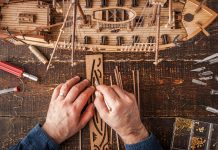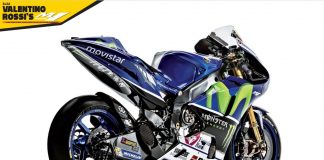Scale Model Basics: Acrylic vs Enamel Paint
Reading a post about paint can be a lot like, well, watching paint dry. But as that’s actually a big part of the scale model experience, we’re hoping you’ll bear with us. While enamel paint has been around for donkey’s years, a tried and true tool for model makers everywhere, the more modern acrylic has fast become the paint of choice for many.
As with anything in the world of scale modelling, take your creative license and run with it.
But is one actually better than the other? We’re here to highlight the pros and cons of each, with a couple of handy alternatives thrown in for good measure. So strap in, put on a nice pot of tea or coffee, and follow us on this riveting paint splattered journey…
First Things First: Let’s Talk Chemistry
Yeah science! To truly understand how these paints act the way they do, we need to know the why. Essentially, all paint is a combination of four distinct properties:
Pigment: The powder that provides colour and opacity
Binder: Holds the pigment particles and provides good adhesion
Solvent: The medium that disperses the binder, pigment, and additives (e.g. water, oil)
Additive: Modifies the paint properties (e.g. driers, flow control agents)
The main difference between acrylic and enamel paints then, comes down to the solvent used – acrylic using water, enamel using oil. Now onto the main event…
Acrylic: Built for Speed
|
PROS |
CONS |
|
|
Enamel: The Slow and Steady Option
|
PROS |
CONS |
|
|
As you can see, there is no clear-cut winner. Acrylic is the faster, more popular option these days, but enamel is definitely not without its merits.
If you’re looking for a couple more options to play with, you can try these cheeky alternatives:
Pastels: Excellent for tinting other liquids. Scrape some of the pastel into a fine powder, and add it to water for use as a detail enhancer. Just dab it onto the surface of your painted model and let it flow into crevices to make them stand out.
Printer Ink Cartridges: Mix and match any of the four colours – cyan (blue), magenta (pink), yellow, and key (black) – in a medium such as clear floor wax to achieve a great transparent tint for clear plastic pieces. E.g. Use magenta and cyan to tint the clear plastic of a police car’s bar lights.
As with anything in the world of scale modelling, take your creative license and run with it. Experiment with different types of paint and different techniques to get a feel for how they work and what you can achieve. The great thing about painting is that you can fix your mistakes with a quick clean and a new coat, so with enough practice you really can achieve your version of perfect.
Are you about to start on a tricky paint job, or just applying the final touches? We love to see all of your projects, big and small, so please share and inspire us with your latest photos in the ModelSpace Forum and on the ModelSpace Facebook Page.






